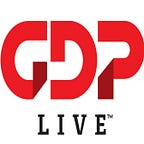This year’s budget is the biggest in history with almost half of the increase being spent on the planned health system restructure ($3b) and climate change initiatives.
The record increase in spending has been widely criticised by opposition parties who argue it will have an inflationary effect on an already overheated economy.
For middle-class households struggling with the worst inflation in 30 years, rapidly rising mortgage interest rates and falling house prices, the budget does not offer significant relief other than a $350 cost of living payment for those earning under $70k p.a.
A cap on debt levels
Two years of pandemic spending have sent New Zealand’s national debt spiralling upwards. While still low by international standards, as a small island country we are particularly sensitive to high debt levels.
Grant Robertson announced new rules ahead of the Budget which introduces a 30% debt ceiling. Surpluses are also to be kept to no more than 2% of GDP.
The way debt is calculated has also been changed to include the NZ Super Fund ($57b) as an asset, making it “more internationally comparable” but also meaning it cannot as easily be compared with past government debt levels.
Health
The planned major health reforms — replacing all 20 district health boards with a new centralised structure (Health NZ) and a separate Māori Health Authority — will take effect from 1 July. The government has allocated two years of funding to get the new system up and running.
The budget also fulfills a promise made in the 2020 election to increase the amount people can claim for an emergency special needs grant for dental care, from $300 to $1000, plus funding for mobile dental clinics, costing $37.5m (a total of $176m over four years).
Mental health services that have struggled to cope with increased demand even before the pandemic received a $100m investment over four years. The government had previously confirmed a $90 million to expand an in-school mental health and wellbeing program for primary and intermediate-aged children.
Climate Change
The government released their Emissions Reduction Plan at the beginning of the week which is outside the $6b allowance, being funded by the Emissions Trading Scheme receipts. There is a big focus on transport which is the country’s fastest-growing source of emissions and accounts for half of our CO2 emissions. Agricultural emissions will be dealt with under a separate He Waka Eke Noa policy.
The government will spend 1.2b on cleaning up transport including a “scrap and replace” trial to help low and middle-income families buy electric and hybrid vehicles.
The aim is to have 30% of the country’s light vehicles zero-emission by 2035 with all-new vehicles required to be “low or zero” emissions by that time. Any new buses will have to be zero-emission by 2025.
In a move to encourage public transport, the government has decided to extend its 3-month trial of half-price public transport introduced on 1 April fares for another two months. Public transport is already heavily subsidized in New Zealand, but the budget also creates a fund that can be used for further subsidies.
Education
Raising Kiwi children’s education levels has been big news ever since an OECD report in 2018 which revealed maths and literacy achievement rates of 15-year-olds have been declining for around 20 years, with significant drops between 2009 and 2012. Apart from the impact on student outcomes, it is almost impossible to raise the county’s dire productivity levels without a highly educated and skilled workforce. A lack of educational attainment can also further entrench intergenerational inequality.
The government committed to an $88 million package to address school attendance. Truancy has increased over the COVID period, where it is argued some senior students have picked up jobs to support their families. Other students have struggled to adjust to online learning. However, the statistics show there has been a steady increase in non-enrolled students and a drop in regular attendance since well before the pandemic: from 7223 in 2015 to 9076 in 2017 and 10141 in 2021.
The government also announced before budget day that it would be investing $230 million in trades training through the Apprenticeship Support Scheme. They have claimed this will enable employers to train 24,000 new apprentices which should be welcome in the construction industry that was struggling to find skilled workers.
The budget also allocates $86.5 million over four years to assist particularly Maori and Pacific students to get drivers’ licences. Having a driving licence is a prerequisite for many jobs so the current low rates of young people who attain full a licence is an equity issue.
Crime
To tackle the rising level of crime in the country the government is putting $562 million over four years into police. A good chunk of this will go to training more police, with a targeted ratio of one police officer for every 548 Kiwis. There will also be a focus on tackling growing gang violence and organized crime.
The 2022/03 budget very much focusses on the long term and offers only limited, short-term relief for middle- and low-income earners. Whether it will be enough to hold on to those in the middle who switched to vote Labour at the last election remains to be seen.
